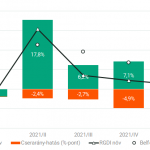NBER WorkingPaper No. 21280
Issued in June 2015
NBER Program(s): EFG IFM
Why did the country that borrowed the most industrialize first? Earlier research has viewed the explosion of debt in 18th century Britain as either detrimental, or as neutral for economic growth. In this paper, we argue instead that Britain’s borrowing boom was beneficial. The massive issuance of liquidly traded bonds allowed the nobility to switch out of low-return investments such as agricultural improvements. This switch lowered factor demand by old sectors and increased profits in new, rising ones such as textiles and iron. Because external financing contributed little to the Industrial Revolution, this boost in profits in new industries accelerated structural change, making Britain more industrial more quickly. The absence of an effective transfer of financial resources from old to new sectors also helps to explain why the Industrial Revolution led to massive social change – because the rich nobility did not lend to or invest in the revolutionizing industries, it failed to capture the high returns to capital in these sectors, leading to relative economic decline. This paper is available as PDF.
Nem található esemény a közeljövőben.
A KRTK Közgazdaság-tudományi Intézet teljesítményéről A KRTK KTI a RePEc/IDEAS rangsorában, amely a világ közgazdaság-tudományi tanszékeit és intézeteit rangsorolja publikációs teljesítményük alapján, a legjobb ... Read More »

Tisztelt Kollégák! Tudományos kutatóként, intézeti vezetőként egész életünkben a kutatói szabadság és felelősség elve vezetett bennünket. Meggyőződésünk, hogy a tudomány csak akkor érhet el ... Read More »

Srí Lanka: a 2022-es gazdasági válság leckéje – A. Krueger Lessons from Sri Lanka Anne O. Krueger Jul 25, 2022 – Project Syndicate ... Read More »

A permanens válság korában élünk – J. Meadway We’re living in an age of permanent crisis – let’s stop planning for a ‘return ... Read More »

A 2021 végén, illetve 2022 elején tapaszalt 6, illetve 7%-os cserearányromlás brutális reáljövedelem-kivonást jelentett a magyar gazdaságból. A külső egyensúly alakulásával foglalkozó elemzések többnyire ... Read More »
